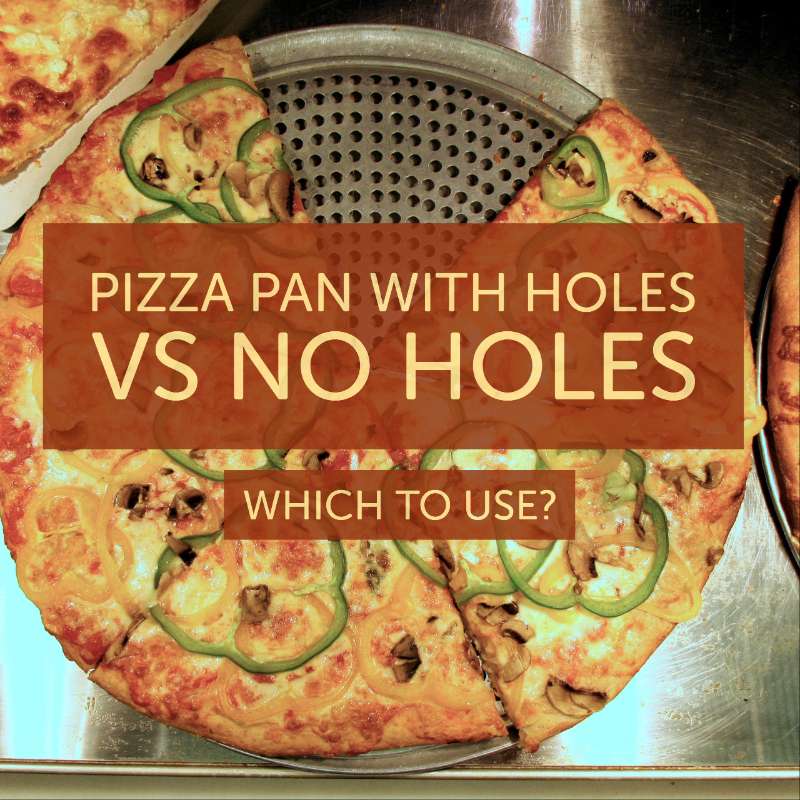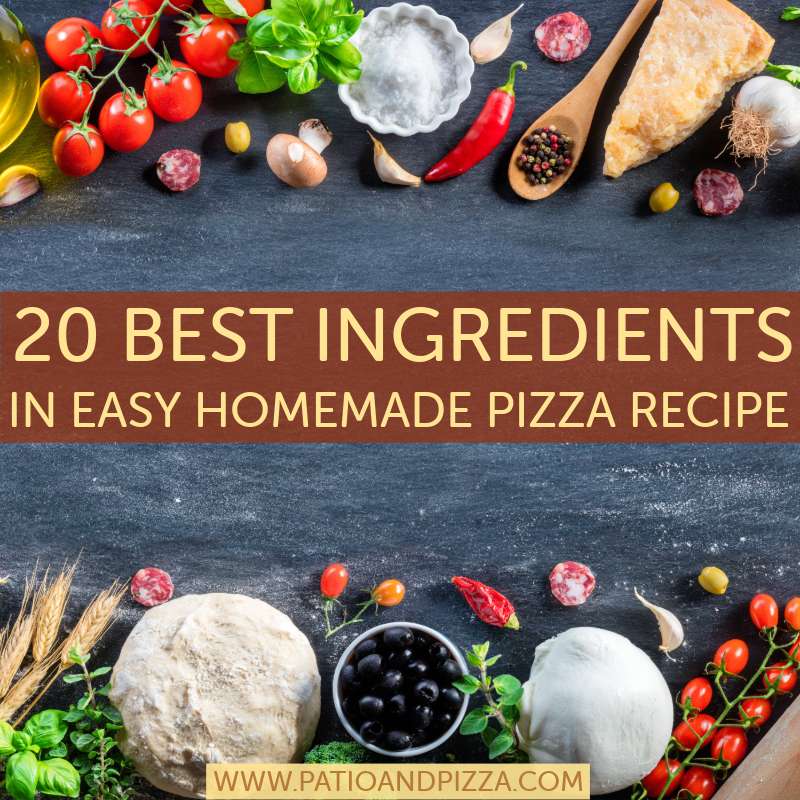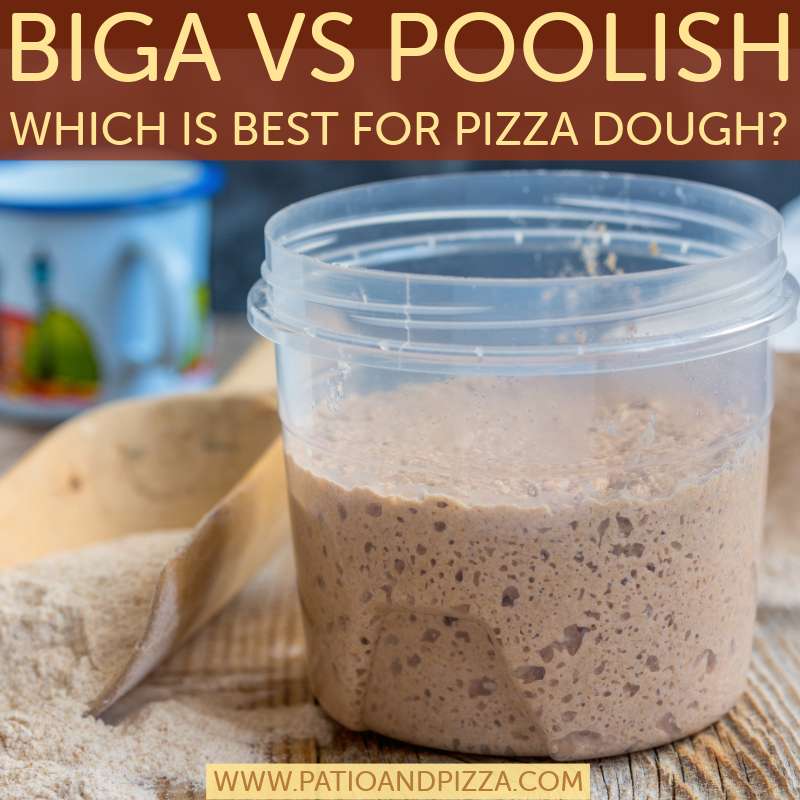Welcome to the ultimate showdown in the pizza kitchen – a clash between two heavyweight contenders that can make or break your pizza game: Holey Moley, the pizza pan with more holes than a spaghetti strainer, and Solid Sally, the pan without a single opening to its name.
Choosing the best pizza pan can be the secret ingredient to achieving pizza perfection. It's obvious that the main difference between these two different types of pizza pans is that one has holes and one doesn't. But wait... there's more...
We're diving deep into the crusty world of pizza-making to explore the top 5 differences between cooking with a pizza pan that has holes versus the type of pan without holes. Whether you're a home pizza cook or a professional chef, this blog post is your guide to navigating the crispy versus chewy debate and finding the right pan that will have your taste buds singing. Let's get ready to rumble in the oven!
Perforated vs Non-Perforated Pizza Pans
Before we embark on our pizza pan showdown, let's clear the fog surrounding the contenders. A perforated pan, affectionately known as the 'Holey Moley' (Pizza Pan with Holes) in our culinary arena, boasts a surface peppered with perforations or holes. These openings serve a crucial role in facilitating air circulation, resulting in a crispier crust and faster cooking times.

On the other side of the ring, we have the non-perforated pizza pan, aptly named 'Solid Sally' (Pizza Pan without Holes). This pan, with a flat surface as smooth as a calm lake, lacks any openings, providing a solid foundation for even heat distribution. The absence of holes in non-perforated pans ensures a slower and more uniform cooking process, offering a canvas for pizza enthusiasts who appreciate a softer, more doughy crust.

Now that we've unmasked our contenders let the battle of flavors begin!
1. Heat Circulation
If you're looking to cook your pizza quickly, a pan with holes may be the way to go. The holes allow for hot air to circulate, resulting in a quicker cooking time. This can be great for those days when you're short on baking time or just really craving pizza. However, if you have a little bit more time and want to get that crispy crust we mentioned earlier, a pan without holes may be the way to go. The lack of holes means that the crust will take a little longer to cook, but the end result will be worth it.
Holey Moley:
Pros: The holes in the pan allow hot air to circulate, resulting in a crispy crust. This is perfect if you love a crispy pizza for a crunchy bite.
Cons: The heat circulation can be too efficient, causing the top of the pizza to cook faster than the crust, potentially leading to uneven cooking.
Solid Sally:
Pros: Solid pans provide a more even distribution of heat, ensuring that both the crust and toppings cook at a similar rate. Ideal for those who prefer a balanced texture in each bite.
Cons: The lack of air circulation might make the crust less crispy, leaning towards a softer texture.
2. Crust Texture
When it comes to crust texture, using a pizza pan without holes is a great way to achieve a crispy crust. The lack of holes means that the pizza dough won't be exposed to as much air as it would be with a pan that has holes. This can be great for those who enjoy a thin, crispy crust. On the other hand, using a pan with holes allows for a more evenly cooked crust. The holes allow for more air to circulate, resulting in a dough that's crispy on the outside and soft on the inside.
Holey Moley:
Pros: The holes in the pan allow moisture to escape, preventing a soggy crust and resulting in a delightful crunch.
Cons: Overcooking or high temperatures can lead to an excessively crunchy crust, which may not be appealing to everyone.
Solid Sally:
Pros: Without holes, the solid pan helps retain moisture, producing a softer and chewier crust. Perfect for those who enjoy a more doughy texture.
Cons: If not monitored closely, the crust might end up too doughy and lack the desired crispiness.
3. Topping Perfection
If you're someone who likes to go all out with toppings on your pizza, using a pan with holes can be a game-changer. The holes allow for excess moisture to escape, preventing the crust from getting soggy. This also means that toppings like mushrooms and olives won't get too wet from their own juices and will cook evenly. However, if you're someone who likes a lot of cheese on your pizza, you may want to opt for a pan without holes. The lack of holes means that there won't be any spaces for cheese to fall through, resulting in a more cheesy pizza.
Holey Moley:
Pros: Faster cooking of toppings due to enhanced heat circulation, ensuring they are cooked to perfection without overcooking the crust.
Cons: It requires more attention to prevent toppings from burning or drying out due to the efficient heat transfer. Nobody wants burnt pizzas!
Solid Sally:
Pros: Toppings cook more gradually, reducing the risk of burning. Great for those who want to savor the distinct flavors of each topping.
Cons: The slower cooking process might not suit those who prefer their toppings with a slightly charred or caramelized flavor.
4. Versatility
When it comes down to it, the best option for your pizza game really depends on the type of pizza you're making. If you're someone who likes a lot of toppings or is looking to cook your pizza quickly, a pan with holes may be the way to go. But if you're a pizza lover who values a crispy crust or wants to make a pizza with a lot of cheese, solid pizza pans may be the better option. Ultimately, the decision is yours and you can always try both options to see which one works best for you.
Holey Moley:
Pros: Ideal for thin-crust pizza, as the holes help achieve that perfect crispy texture. Also works well for reheating leftovers and achieving a crispy bottom on other baked goods.
Cons: Not the best choice for thick-crust pizzas or dishes with a high moisture content, as the efficient heat circulation may lead to uneven cooking.
Solid Sally:
Pros: Versatile for various pizza styles, including deep-dish. Suitable for baking other dishes like casseroles and quiches that benefit from even heating.
Cons: May not provide the desired crispy crust for those who are particular about their homemade pizza texture.
5. Ease of Handling
Ease of handling can be a game-changer in the kitchen, especially when the aroma of a freshly baked pizza beckons. In this round of our pizza pan face-off, we're putting the spotlight on how easy (or not) it is to wrangle these kitchen champs in the heat of culinary battle. The Holey Moley, with its airy design, and the Solid Sally, a sturdy heavyweight, both vie for the title of the most user-friendly pizza pan. From seamless maneuvering to heat retention, let's explore how these contenders stack up in the realm of ease of handling.
Holey Moley:
Pros: The perforated design often makes the pan lighter and easier to handle. Its reduced weight, coupled with the potential for non-stick coatings, facilitates seamless maneuvering in and out of the oven.
Cons: The lightweight nature of the pan may result in less heat retention, requiring swift serving to keep the pizza warm.
Solid Sally:
Pros: Non-perforated pans, being typically thicker and heavier, retain heat well. This feature ensures that your pizza stays warm for a more extended period after it leaves the oven.
Cons: The added weight might make the pan a bit more cumbersome to handle, especially when dealing with larger pizzas.
6. Beyond Pizza
While pizzas undoubtedly steal the spotlight, a pizza pan's versatility can elevate it from a one-hit wonder to a kitchen MVP. In this segment, we unravel the culinary magic that extends beyond the realm of pizza, examining how the Holey Moley and Solid Sally pans flex their muscles in the kitchen. From crispy appetizers to delectable desserts, these pans have more than a few tricks up their sleeves.
Holey Moley:
Pros: Besides pizzas, the Holey Moley excels at baking a variety of crispy delights, such as appetizers, flatbreads, and even cookies. Its perforated design offers a versatility that extends to other baked goods with a desire for a crispy finish.
Cons: While great for achieving crispy textures, it may not be the top choice for dishes requiring a softer touch, like certain cakes or bread with a tender crumb. Foods may cook or brown too quickly at the bottoms due to the increased heat circulation.
Solid Sally:
Pros: The Solid Sally is a versatile workhorse in the kitchen, ideal for baking not only thick-crust pizzas but also a range of savory and sweet treats. Its even heat distribution makes it a reliable choice for casseroles, pies, and bread, allowing for a broader spectrum of culinary creativity.
Cons: The lack of holes limits its ability to deliver the same level of crispiness achieved by a perforated pan, making it less suitable for certain crispy-textured dishes. Without holes to drain away excess fat, foods can end up being greasy.
7. Cleanup Ease
Let's face it, cleaning up after cooking can be a pain. When it comes to regular pizza pans, the same applies. However, using a pan with holes can actually make cleaning up a little easier. The excess moisture that escapes through the holes means that there won't be as much of a mess to clean up. On the other hand, using a pan without holes means you'll have more surface of the pan to clean. And, there won't be any holes for water to escape through, so it's important to make sure you thoroughly dry the pan after cleaning.
Holey Moley:
Pros: The pizza pan holes make it easier for air to circulate around the crust, reducing the chances of sticking. Often easier to clean due to less baked-on residue.
Cons: Toppings or crumbs can sometimes fall through the holes, making cleanup a bit more involved.
Solid Sally:
Pros: The lack of holes simplifies cleanup, as there are no gaps for food to get stuck in. Ideal for those who value a straightforward post-meal cleanup or dishwasher use.
Cons: The absence of holes may require a bit more effort to remove any stuck-on food, especially if it has baked onto the surface.
Pizza Pan With Holes
When it comes to the Holey Moley, its unique design lends itself to certain pizza styles that truly shine with its perforated prowess. Thin-crust enthusiasts, rejoice! The perforated pizza pan is your ticket to pizza paradise.
The small holes allow hot air to circulate efficiently, crisping up that thin layer of dough to perfection. If you're a fan of the classic Neapolitan pizza or New York-style slices with a delightful crunch, the Holey Moley is your go-to. Moreover, this pan excels at reheating leftover pizza, breathing new life into slices with a crispy bottom.
Beyond the realm of pizzas, the Holey Moley steps into the spotlight for baking thin-crust tarts, flatbreads, and even achieving that elusive crispy texture for appetizers. So, if you're a devotee of the thin and crispy, let the Holey Moley be your culinary companion in the pursuit of the perfect bite.
Pizza Pan Without Holes
On the flip side of the pizza pan spectrum, we have the Solid Sally, the unsung hero for those who appreciate a heartier pizza experience. This non-perforated wonder is tailor-made for pizza styles that thrive on a more substantial crust. Deep-dish enthusiasts, this is your moment to rejoice!
The Solid Sally pan provides a consistent and even heat distribution, resulting in a thick, doughy crust that stands up to the weight of generous toppings. Whether you're crafting a Chicago-style deep-dish pizza or experimenting with delicious thick crust pizzas, the Solid Sally pan offers a reliable foundation.
Its versatility extends beyond pizzas; it's the ideal choice for baking quiches, and other savory delights that benefit from a slower, more controlled baking process. If you find joy in sinking your teeth into a satisfyingly chewy crust that perfectly complements robust toppings, let Solid Sally be your kitchen companion in the pursuit of pizza perfection.
In the end, whether you go for Holey Moley or Solid Sally depends on your pizza crust preferences and cooking style. Whether you're a fan of the crispy crust or just looking for a better way to distribute your toppings, there's the right pizza pan out there for you. Experiment with both types of pans to find the perfect pan for the perfect pizza!




